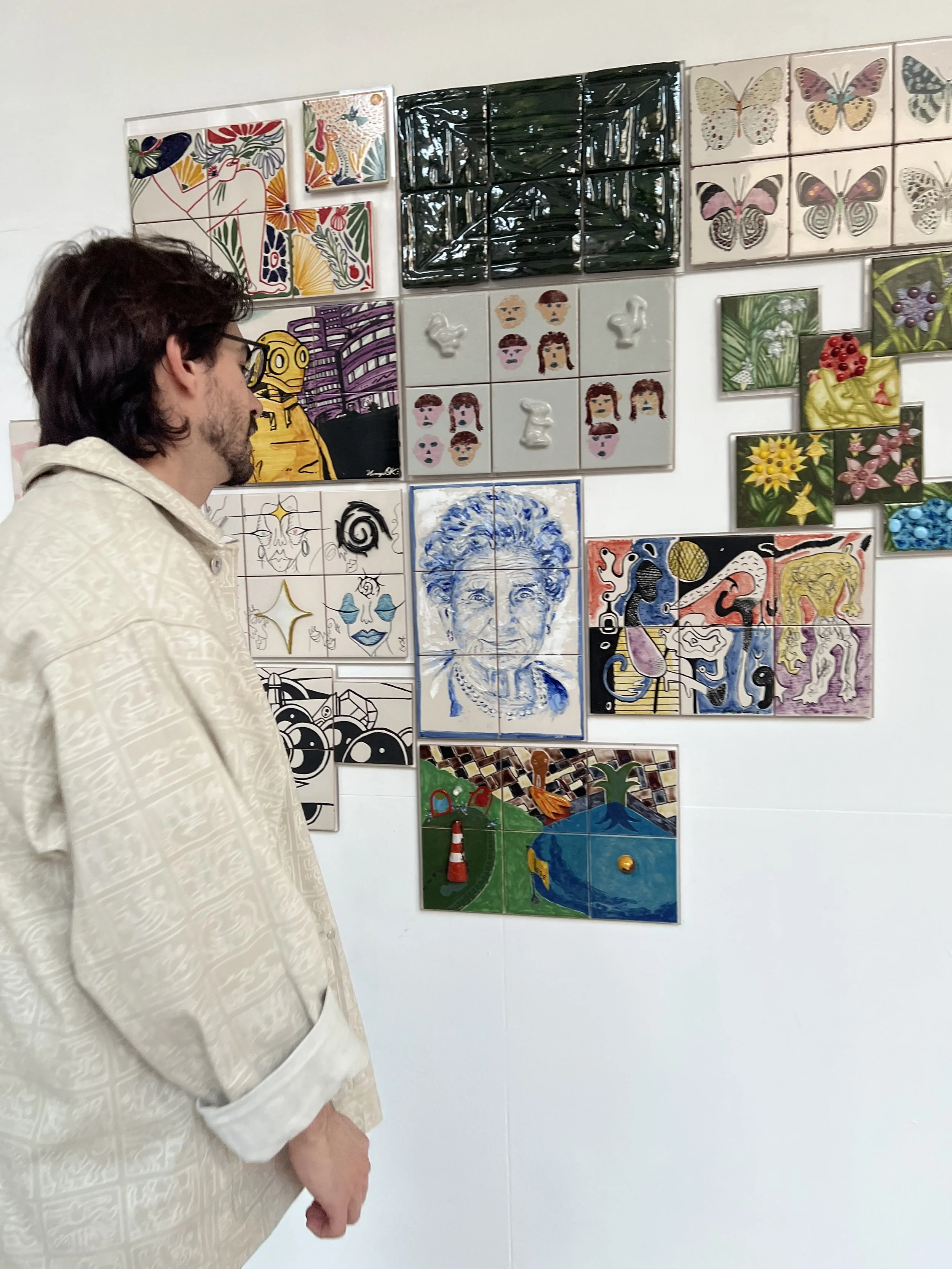A Tribute in Tiles: Honoring My Grandmother at the Museu Nacional do Azulejo
In May 2025, a piece of my heart will live inside the most visited museum in Lisbon, the Museu Nacional do Azulejo, in the form of a portrait painted in traditional Portuguese tiles. This will be my first artwork to be permanently displayed in a national museum—and I can’t think of a more deserving subject than the woman who shaped not only my childhood but the very fabric of my family: my grandmother, Vóvó Nana.
The Invitation: From Page to Tile
In late 2023, A Magazine, a respected platform dedicated to Portuguese culture and creativity, featured my work in a special edition that explored emerging voices in contemporary art (Read article here). This connection blossomed into a creative dialogue, and earlier this year, the editorial team reached out again with a proposal that took my breath away: to create an artwork that would be interpreted in azulejo (Portuguese glazed tiles) and displayed at the Museu Nacional do Azulejo.
The Muse: Vóvó Nana
Choosing the subject was instinctive. My grandmother, affectionately called Vóvó Nana, has been the unshakable cornerstone of the Romano family. With a serene smile, piercing blue eyes, and a heart full of love, she has been the architect of countless family reunions, Sunday dinners, and gentle memories.
There is a phrase that has lived in her home for decades:
“O Amor e o Carinho tudo vencem”
(“Love and care conquer all.”)
It’s more than just a quote—it’s her life’s motto. She made sure every couple in the family had that frame in their home, gifting it like a sacred family heirloom. It’s her philosophy, and for all of us, it’s become a symbol of unity.
Sadly, since January 2024, her health has been declining, and our family has been walking a fine line between presence and farewell. This artwork is a tribute, not just to her legacy, but to love, resilience, and memory itself.
The Process: From Sketch to Kiln
Inspired by the blue-and-white tradition of Portuguese azulejos, I began with a watercolor sketch. The soft transitions and blue hues were a nod to centuries of tile art, yet the subject—a personal, expressive portrait—was unmistakably mine. It was my way of blending tradition with identity.
In April 2025, I was invited to paint this piece at the museum itself, using traditional tile painting techniques. The tile was fired at more than 900°C, sealing the memory in a way that felt both permanent and timeless.
Still, I couldn’t let it end there. As a painter who thrives on texture and expression, I added a final layer: I painted over the tile using oil paints. This wasn’t just embellishment—it was a statement. Oil painting is my language, and it felt vital to embed a bit of myself into this tribute.
The Ceremony: May 6th, 2025
The tile will be unveiled in a special event at the Museu Nacional do Azulejo on May 6th, 2025. I’ve invited my entire family—because this isn’t just an artwork. It’s a collective memory, a living shrine to the woman who kept us all together.
This will not only mark a milestone in my artistic career but also a deeply emotional moment for our family, especially in the face of uncertainty around her health. Whether or not she is fully aware of what’s happening, I believe she will feel the love that surrounds her legacy.
(Suggested image placement: You and family at the exhibition, if taken. A close-up of the tile in its final installation location.)
Conclusion: Art That Lives On
This portrait of my grandmother is more than an artwork—it’s a message to future generations:
Love and care still matter.
Family is sacred.
And stories live forever in the textures we leave behind.
To have this piece displayed in Lisbon’s Museu Nacional do Azulejo is not just an honor. It’s a full-circle moment: a conversation between the past, present, and the artist I continue to become.




